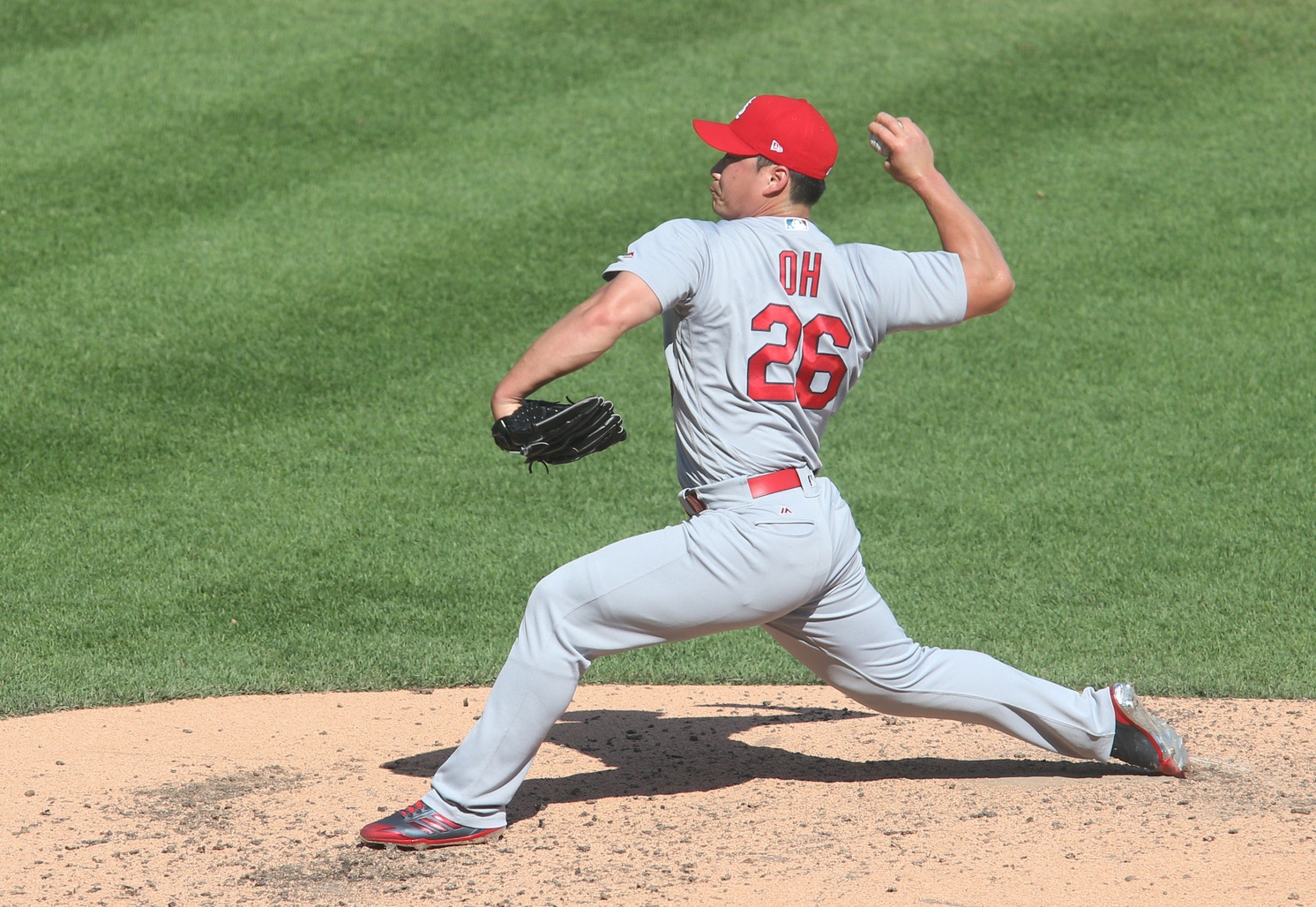The logic with the Cubs and Oh remains roughly the same as it was when I wrote about Pat Neshek, with one very large difference. While Neshek is coming off perhaps the best season of his career, Oh is coming off a very down year in 2017. This is precisely the reason that I think he would work for the Cubs as they look to rebuild a bullpen.
Position: Right-handed pitcher, reliever
2017 Stats: 59.1 IP, 4.10 ERA, 96.3 DRA-, 101 cFIP, 20.5% K, 5.7% BB
How He Fits: While I will look at Brandon Morrow as a Cubs target in the near future, Patrick Mooney recently wrote up that the Cubs should be looking for the next Brandon Morrow. Perhaps Seung Hwan Oh is that guy. There is really no sugar coating it, Oh was not good in 2017. Following up a great 2016 campaign in his MLB debut (1.92 ERA, 55 DRA- in 79.2 IP), Oh seemed to lose everything that made him great. While the walk rate remained constant, the strikeout rate took a huge dip (From 32.9 percent to 20.5), the ground ball rate plummeted (41 percent to 30), and the stuff and the command generally looked worse.
To continue talking about the downward trend in 2017, Oh saw steep declines in his swinging strike rate (From 18 percent to 12.9) and perhaps most importantly the movement on his slider seemed to disappear (From 1.18 inches to .32)
What was the reason for this decline? Oh is 35 years old, so perhaps it was his age. However, the velocity remained pretty steady from 2016 to 2017 (93.53 in 2016, 93.38 in 2017), so I don’t think that was it. Often times when movement disappears over a short period of time, the culprit is mechanical. If the Cubs see something in Oh’s mechanics, he would certainly be worth the risk as a flyer. Scenarios like this are where you really have to trust your pro scouting department.
One of the key reasons that Oh would interest is because of the contract it would require. While he wouldn’t be a guy you’d want to be the primary move this off-season, he certainly would be a great supplementary move. Both Jon Heyman and his expert recently predicted that Oh would receive just one-year and $4 million this offseason. The commitment is short, and the upside is high. If things don’t work out, the Cubs can simply cut bait and if things go well, the Cubs will benefit from his great performance. And then they can dip back into the free agent market next offseason if they wish, when many of the games top relievers will be free agents.
Why It Won’t Work: I see a couple main reasons that Oh to the Cubs simply won’t work. The first is that the Cubs simply think he is done. As I mentioned earlier, the numbers all took a pretty serious nosedive in 2017, and maybe the Cubs think that he is unfixable. There is certainly enough in the peripherals that it wouldn’t be insane to think a team would come to this conclusion. In that case, even at such a steep discount, they simply might wish to go after the plethora of other options this offseason.
The second, more likely, reason that Oh to the Cubs might not work is the role the Cubs will be willing to offer him. Often times with former closers like Oh, their best path to rebuilding value is to sign with a rebuilding team where they are likely to get a higher leverage role. While Oh could be a great depth addition to the pen, they are certainly not going to offer a guy coming off the year he had a guaranteed high-leverage role. Oh might look to a team who doesn’t expect to compete in order to build his value. He could then perhaps be dealt at the deadline if he has a good first half and look to cash in next offseason. His age is the wild card here. Because he will be 36 in July, he might prefer a competitive team so he can look to win in 2018.
Alternatives: As with Neshek, the options are plentiful if they opt to go in other directions. Matt Albers, Steve Cishek, Luke Gregerson, Brandon Kintzler, Brandon Morrow, Pat Neshek, Addison Reed, Bryan Shaw, Joe Smith, and Anthony Swarzak all highlight the list of guys they could take a look at.
Lead photo courtesy Charles LeClaire—USA Today Sports
